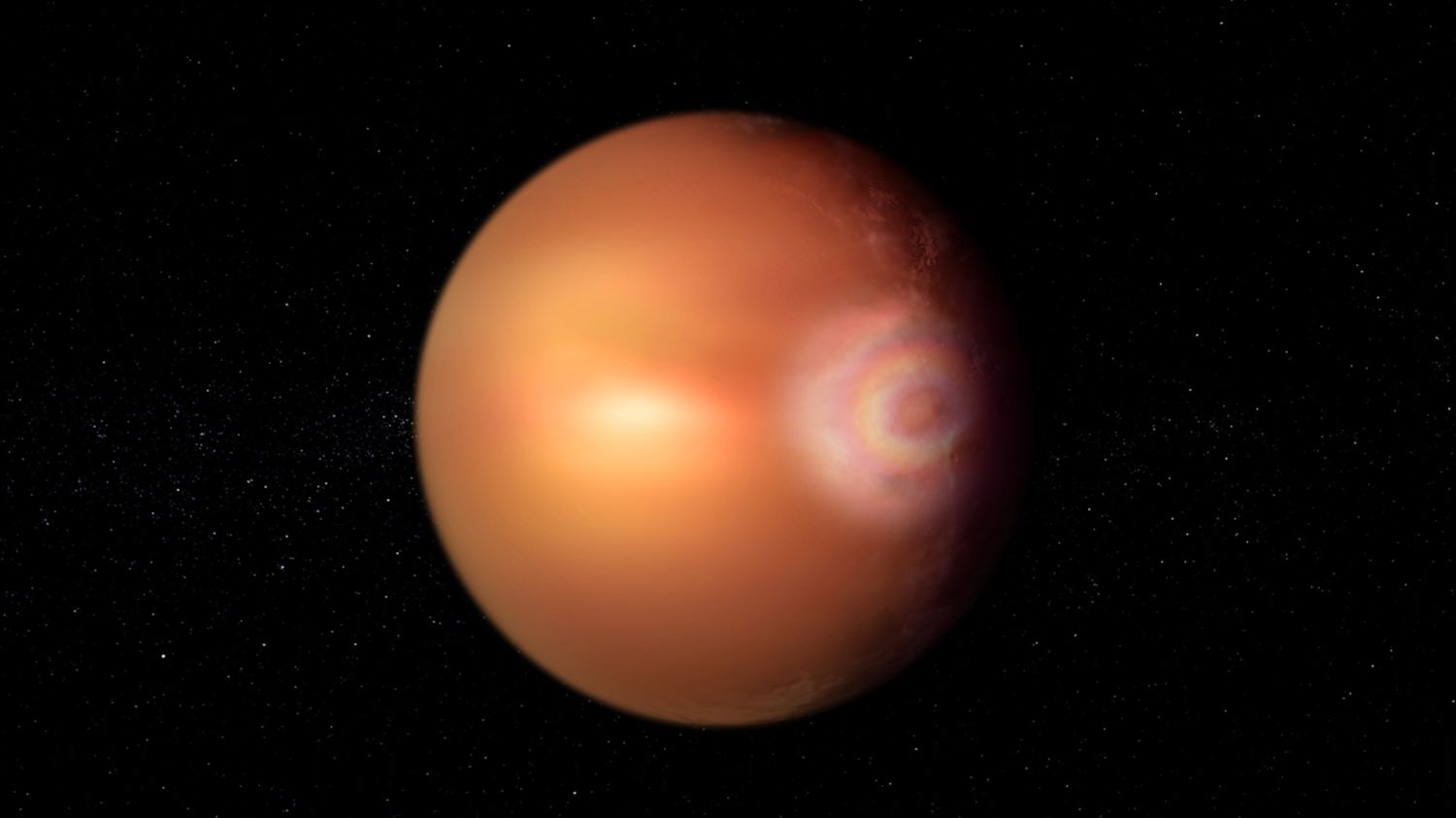We owe this observation to the European space telescope Cheops, specialized in the study of planets located outside our solar system.

Published
Reading time: 2 mins

A huge extraterrestrial rainbow, very far from home. This is what teams from the European space telescope Cheops, specialized in the study of exoplanets, that is to say planets located outside our solar system, believe they have observed.
The European Space Agency published a press release on Friday April 5, reporting the existence of a potential phenomenon glory on the gas planet Wasp-76b, located 637 light years from Earth. As summarized by NASA, the United States space agency, a glory is an optical effect which is characterized by the appearance, in mist or fog, of concentric circles of color ranging from blue to red, from the inside to the outside. This type of phenomenon occurs on Earth when water droplets filter light, creating a rainbow.
This is not the first time that a glory extraterrestrial is observed. In 2011, the magazine Nature reported that a similar phenomenon had been identified on Venus, Earth’s cousin planet, located in our solar system. Here, the potential appearance of such an effect on the exoplanet Wasp-76b does not necessarily suggest that suspended water is found massively in its atmosphere or that its composition is similar to that of Venus, but rather that we can find elements stable over time.
“There is a reason why no one glory has not been seen outside our solar system: this requires very specific conditions” appearance and observability, explains Olivier Demangeon, main author of the scientific article discussing this discovery and astronomer at the Institute of Astrophysics and Space Sciences of Portugal. “First, you need atmospheric particles that are almost perfectly spherical, completely uniform and stable enough to be observed over a long period of time”, he explains. Afterwards, “the star closest to the planet must illuminate it directly, and the observer – here Cheops – must be placed in the right orientation”.
A rain of molten iron
If the artist’s view of glory on Wasp-76b can encourage daydreaming, this planet is unfortunately far from being a destination of choice for a human. One of its faces is constantly turned towards its nearest star, and temperatures there reach around 2,400 degrees Celsius, underlines the department of the University of Geneva (Switzerland), one of whose teams participated in this study. .
On the night side of Wasp-76b, the temperature is lower. The elements intensely heated on the other side, once evaporated, end up condensing on the darker side: there we find “iron clouds dripping in iron rain”write the Swiss academics.
Further observations must now be carried out to fully confirm the phenomenon. Validation would imply, according to the University of Geneva, that Wasp-76b has clouds formed by “perfectly spherical droplets, existing for at least three years, or which are constantly renewed”. In addition, the persistence of these clouds would mean that the temperature of the atmosphere there is very stable. Clearly, it could be that molten iron is raining almost continuously on Wasp-76b. The rainbow would hide hell.
